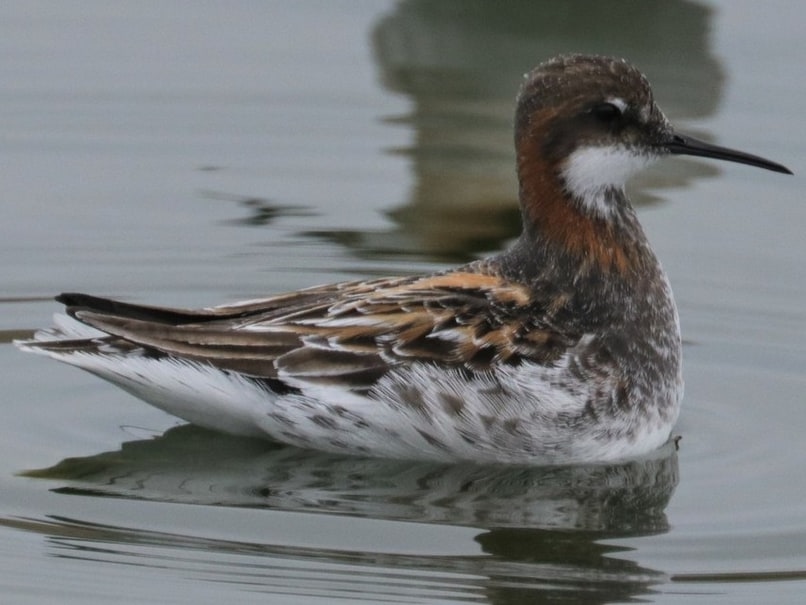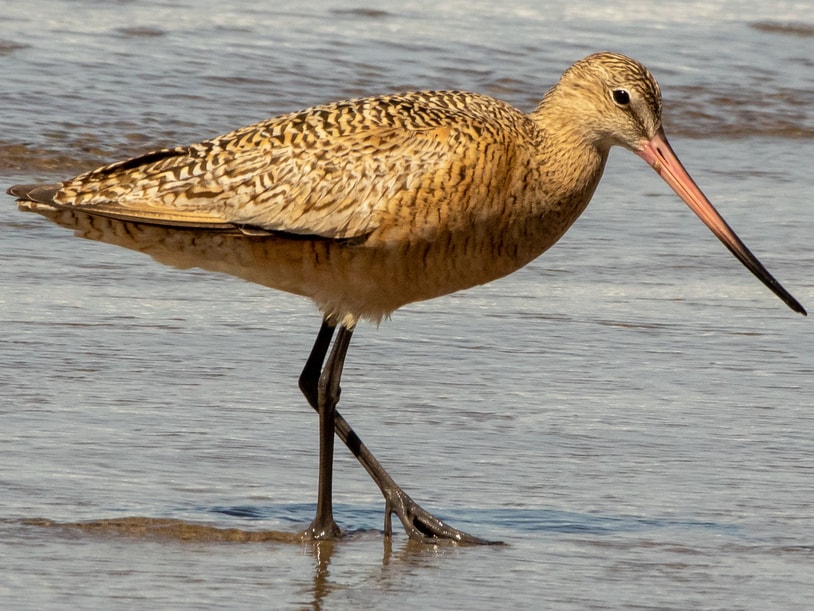Known as “shorebirds” due to how they congregate at the edges of rivers and oceans, this group includes sandpipers, plovers, snipe, stilts, and several others. In Columbia County most species are seen exclusively along the Columbia River, especially on Sauvie Island and in the Scappoose Bottoms.
Western Sandpiper – Scalloped brown in summer, drab gray in winter. Seasonal, like most sandpipers comes to Columbian shores between July and August. (photo © Ken Chamberlain )
Baird’s Sandpiper – Similar to the Western Sandpiper but larger with more prominent scallops on back and brown around the throat. Uncommon here. (photo © Patricia Teague )
Semipalmated Sandpiper – Grayish-brown above with dark legs. Smaller head and shorter, straighter bill than Western Sandpiper. Rare and usually travels with other species. (photo © cgates326 )
Sanderling Patricia Teague )
Least Sandpiper Phil Kahler )
Pectoral Sandpiper cgates326 )
Dunlin – Gray-brown with white belly in winter becomes rust-brown with black belly in spring. Bill is very long. Prefers watery mudflats, congregating in large groups. (photo © Phil Kahler )
Stilt Sandpiper – Like Dunlin has a long and slightly droopy bill, but with much longer and lighter-colored legs. Prefers the shallow water of marshes. (photo © rsnyder 11 )
Spotted Sandpiper Patricia )
Solitary Sandpiper – Unlike Spotted Sandpiper it has white speckles on its brown back. Usually seen alone or in pairs in forested marshes and meadows. (photo © Ken Chamberlain )
Lesser Yellowlegs – Larger and with a straighter bill than Stilt Sandpiper, less obvious eyering and brighter legs than its close relative the Solitary Sandpiper. (photo © Patricia Teague )
Greater Yellowlegs – Somewhat larger with thicker bill than Lesser Yellowlegs, with darker flank and neck. Both yellowlegs found in wet pasture as well as mudflats. (photo © cgates326 )
Wilson’s Phalarope Phil Kahler )
Red-necked Phalarope – In breeding colors has darker breast than Wilson’s Phalarope, in much lighter non-breeding color has obvious dark earpatch. (photo © cgates326 )
American Avocet – Very long legs and an long upturned bill. Head rusty in breeding season and white otherwise, never black. Legs allow it to wade in water of varying depth. (photo © Jon David Nelson )
Black-necked Stilt – Shorter than American Avocet with a shorter straighter bill. Black on back of head and neck. A rarely seen Sensitive Species here. (photo © Jon David Nelson )
Marbled Godwit Phil Kahler )
Whimbrel – Has dark stripes on the head and a strongly downturned bill. Similar to other curlews, but Long-billed Curlew has an even longer bill and lacks the dark stripes. (photo © Steve Dimock )
Short-billed Dowitcher – Colorful bird with a long bill which is neither upturned nor downturned. Forages with a flat back, plunging its long beak over and over into the mud. (photo © Mike Patterson )
Long-billed Dowitcher – The “humped” back while foraging is the best way to distinguish from Short-billed Dowitcher. Can be found in any kind of shallow water. (photo © jayras )
Other shorebirds which have been spotted passing through Columbia County but are very rarely seen include Buff-breasted Sandpiper, Sharp-tailed Sandpiper, Ruff, Red Knot, Curlew Sandpiper, Red Phalarope, Long-billed Curlew, Black Turnstone, American Golden Plover, and Pacific Golden Plover.
Return to Birds guide























